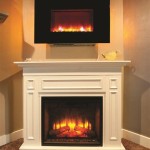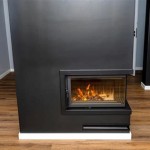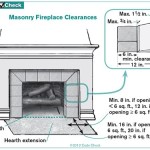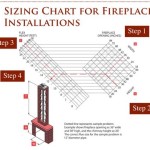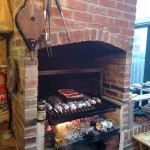Sandblasting Cast Iron Fireplaces: A Comprehensive Guide
Cast iron fireplaces, often found in older homes, possess a timeless aesthetic and provide significant warmth. However, over time, they can accumulate layers of rust, paint, and soot, diminishing their visual appeal and potentially impacting their functionality. Sandblasting, also known as abrasive blasting, is a highly effective method for restoring cast iron fireplaces to their former glory. This process utilizes a pressurized stream of abrasive media to remove surface contaminants, revealing the original metal underneath and preparing it for refinishing.
This article will provide a comprehensive overview of sandblasting cast iron fireplaces, covering the benefits, the process itself, important safety considerations, and alternative cleaning methods. It will also address the specific considerations required for cast iron, which is a relatively brittle material that requires careful handling during the abrasive blasting process.
Understanding the Benefits of Sandblasting Cast Iron Fireplaces
Sandblasting offers a multitude of advantages when it comes to restoring cast iron fireplaces. The primary benefit is the thorough removal of rust. Rust, a product of iron oxidation, not only detracts from the fireplace's appearance but can also weaken the metal structure over time. Sandblasting completely eliminates rust, preventing further corrosion and extending the lifespan of the fireplace.
Removing old paint coatings is another significant benefit. Multiple layers of paint can build up over decades, obscuring the original details and intricate designs of the cast iron. Sandblasting strips away these layers efficiently, exposing the bare metal and allowing for a fresh, even coat of paint or protective sealant to be applied. This results in a more aesthetically pleasing and durable finish.
Furthermore, sandblasting effectively removes soot and other deposits that accumulate within the fireplace. Soot, a byproduct of combustion, can be difficult to remove with conventional cleaning methods. Sandblasting provides a powerful and consistent cleaning action, penetrating into crevices and removing even the most stubborn deposits. This thorough cleaning ensures optimal performance and reduces the risk of smoke buildup.
The process also prepares the surface for priming and painting or sealing. By creating a slightly roughened surface profile, the abrasive blasting process improves the adhesion of subsequent coatings. This enhanced adhesion ensures that the new finish lasts longer and provides better protection against rust and wear. Ultimately, sandblasting provides a comprehensive solution for restoring and preserving cast iron fireplaces.
The Sandblasting Process: A Step-by-Step Guide
Sandblasting a cast iron fireplace involves several key steps, beginning with preparation and ending with post-blasting treatment. Careful planning and execution are crucial to achieving optimal results and minimizing the risk of damage to the cast iron.
First, the fireplace needs to be carefully disassembled. Removable components, such as grates, doors, and decorative panels, should be detached from the main body of the fireplace. This allows for thorough cleaning of each individual part and prevents damage to delicate areas during the blasting process. Any non-removable parts should be carefully masked off to protect them from the abrasive media.
Next, the equipment needs to be set up correctly. This includes selecting the appropriate abrasive media, adjusting the air pressure, and ensuring that the sandblasting cabinet or designated blasting area is properly ventilated. The choice of abrasive media is crucial; softer abrasives, such as glass beads or plastic media, are generally preferred for cast iron to minimize the risk of etching or warping the metal. The air pressure should be carefully controlled to prevent excessive force that could damage the cast iron.
The blasting process itself involves directing a pressurized stream of abrasive media onto the surface of the cast iron. The nozzle should be held at a consistent distance and angle to the surface, using smooth, overlapping strokes. It is important to avoid concentrating the blast in one area for too long, as this can cause overheating and warping of the metal. The process should be repeated as needed to remove all traces of rust, paint, and soot.
After blasting, the fireplace needs to be thoroughly cleaned. This involves removing all traces of abrasive media and dust from the surface. A vacuum cleaner or compressed air can be used to remove loose debris, followed by wiping down the surface with a clean cloth. The cleaned cast iron is now ready for priming and painting or sealing to protect it from rust and corrosion.
Safety Considerations When Sandblasting Cast Iron
Sandblasting is a potentially hazardous process that requires strict adherence to safety protocols. Protecting oneself from the abrasive media and airborne contaminants is paramount. Personal protective equipment (PPE) is essential, including a full-face respirator, safety glasses, ear protection, gloves, and appropriate clothing that covers the skin. The respirator protects against inhaling dust and abrasive particles, while the other PPE prevents physical injury from ricocheting media.
Proper ventilation is also crucial. Sandblasting generates a significant amount of dust, which can pose a health hazard if inhaled. The process should be conducted in a well-ventilated area or, ideally, within a dedicated sandblasting cabinet equipped with a dust collection system. The dust collection system removes airborne particles, minimizing the risk of respiratory problems.
Furthermore, it is important to be aware of the potential hazards associated with the abrasive media. Some abrasive materials contain silica, which can cause a serious lung disease called silicosis. Therefore, it is essential to choose a silica-free abrasive media and to wear appropriate respiratory protection. The manufacturer's safety data sheet (SDS) for the chosen abrasive media should be reviewed carefully to understand the specific hazards and precautions.
Finally, it is important to handle the cast iron fireplace with care. Cast iron is a brittle material that can be damaged if dropped or subjected to excessive force. The fireplace should be securely supported during the blasting process, and care should be taken to avoid bumping or dropping it. Following these safety guidelines will help to ensure a safe and successful sandblasting experience.
Alternative Cleaning Methods for Cast Iron Fireplaces
While sandblasting is often the most effective method for restoring cast iron fireplaces, alternative cleaning methods may be suitable in certain situations. The choice of cleaning method depends on the condition of the fireplace, the nature of the contaminants, and the desired level of restoration.
Wire brushing is a manual cleaning method that involves using a wire brush to remove loose rust, paint, and soot. This method is suitable for lightly soiled fireplaces and can be effective for removing surface rust. However, it is labor-intensive and may not be effective for removing stubborn deposits or multiple layers of paint. It also carries the risk of scratching the cast iron if excessive force is applied.
Chemical stripping involves using chemical solvents to dissolve old paint coatings. This method is less abrasive than sandblasting and may be suitable for delicate cast iron pieces. However, chemical strippers can be hazardous and require careful handling. It is essential to wear appropriate PPE, including gloves, eye protection, and a respirator, and to work in a well-ventilated area. Chemical stripping can also be time-consuming, as multiple applications may be required to remove all layers of paint.
Hand sanding is another method that can be used to remove rust and paint. This involves using sandpaper of varying grits to gradually abrade the surface of the cast iron. Hand sanding is a relatively gentle method that is suitable for small areas or intricate details. However, it is labor-intensive and may not be effective for removing heavy rust or multiple layers of paint. It also requires careful attention to detail to avoid scratching the cast iron.
Ultrasonic cleaning is a more specialized method that uses high-frequency sound waves to create cavitation bubbles in a cleaning solution. These bubbles implode on the surface of the cast iron, dislodging dirt and contaminants. Ultrasonic cleaning is effective for removing soot and other deposits from intricate areas. However, it may not be effective for removing heavy rust or multiple layers of paint. This method also requires specialized equipment and a suitable cleaning solution.
Ultimately, the best cleaning method for a cast iron fireplace depends on the specific circumstances. Sandblasting remains the most effective and efficient solution for restoring heavily soiled or rusted fireplaces. However, alternative methods may be suitable for lightly soiled fireplaces or for delicate pieces where minimizing abrasive damage is a priority.
Regardless of the chosen cleaning method, it is essential to protect the cleaned cast iron from rust and corrosion. This can be achieved by applying a protective coating, such as a specialized cast iron paint or a sealant. The coating should be applied according to the manufacturer's instructions to ensure optimal protection and a long-lasting finish.
The restoration of a cast iron fireplace is a rewarding project that can significantly enhance the beauty and functionality of a home. By understanding the benefits of sandblasting, following proper safety guidelines, and considering alternative cleaning methods, homeowners can successfully restore their cast iron fireplaces to their original glory.

Restoration Of Cast Iron Fireplace Pintyplus

Furniture Sandblasting Specialists

How To Re A Cast Iron Fireplace Direct Fireplaces

How To Re A Cast Iron Fireplace

How To Re A Cast Iron Fireplace Direct Fireplaces

How To Re A Cast Iron Fireplace

What Should I Do With This Fireplace Houzz

Fireplace Restoration Services Rps Fireplaces

Fireplace Restoration Services Rps Fireplaces

How To Re A Cast Iron Fireplace Direct Fireplaces


